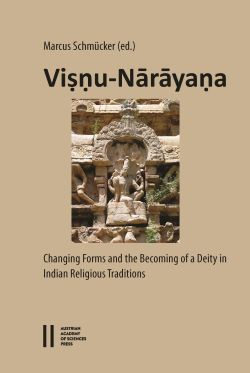Marcus SCHMÜCKER
is Senior Scientist at the Institute for the Cultural and Intellectual History of Asia of the Austrian Academy of Sciences
|
 |
Die in diesem Band versammelten Beiträge behandeln die komplexe Geschichte der indischen Gottheit Viṣṇu-Nārāyana. Diese Gottesidee entwickelte sich während des ersten nachchristlichen Jahrtausends in verschiedenen Traditionen Indiens, insbesondere in Südindien. Ihre Geschichte wird mithilfe philologischer Exegese, Begriffsgeschichte und ikonographischer Zeugnisse rekonstruiert. Zu den in Sanskrit, Tamil und Maṇipravāḷa verfassten Quellen gehören die frühe Caṅkam-Literatur des 3. bis 6. Jahrhunderts n. Chr., das Vaiṣṇava-Textkorpus, insbesondere das Nālāyiradivviyapirabandham (6.–9. Jh. n. Chr.), die Literatur der Purāṇen, vor allem das Viṣṇupurāṇa (5.–6. Jh. n. Chr.), die Pāñcarātra-Literatur sowie die spätere Literatur (10.–14. Jh. n. Chr.) der philosophischen und theologischen Tradition des theistischen Viśiṣṭādvaita Vedānta, in dem der Gott Viṣṇu-Nārāyaṇa eine zentrale Rolle spielt.
Gedruckt mit Unterstützung des Fonds zur Förderung der wissenschaftlichen Forschung (FWF).

… The contributions collected in this volume deal with the complex history of the Indian deity Viṣṇu-Nārāyana. This conception of God evolved in various traditions in India, especially in South India, during the first millennium CE. The history of this development is reconstructed here by various means, including philological exegesis, the history of ideas, and iconographic evidence. In their respective discussions, the contributors examine a range of textual material in Sanskrit, Tamil, and Maṇipravāḷa, including the early Caṅkam literature of the 3rd to 6th century CE; the Vaiṣṇava text corpus, in particular the Nālāyiradivviyapirabandham (6th–9th century. CE); Purāṇic literature, especially the Viṣṇupurāṇa (5th–6th century. CE); Pāñcarātra literature; and the later (10th–14th cent.ury CE) literature of the philosophical and theological tradition of theistic Viśiṣṭādvaita Vedānta, in which Viṣṇu-Nārāyaṇa plays a central role. Also examined is how Viṣṇu-Nārāyaṇa came to be seen as a solitary supreme God, with a reconstruction of the theological arguments supporting this monotheism.
Printed with the support of the Austrian Science Fund (FWF)
|





 Home
Home
 Print
Print
 References
References
 Share
Share